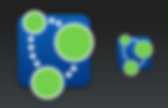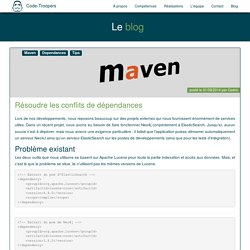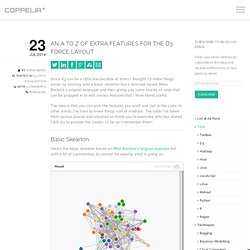

Internals - Why Neo4j Rocks - Andrés Taylor @ GraphConnect SF 2013 on Vimeo. Hardware Sizing Calculator. Neo4j Tutorial. Neo4j is a one of the popular Graph Databases and CQL stands for Cypher Query Language.

Neo4j is written in Java Language. This tutorial will teach you basics of Neo4j, Java with Neo4j and Spring DATA with Neo4j. The tutorial is divided into sections such as Neo4j Introduction, Neo4j CQL, Neo4j CQL Functions, Neo4j Admin, Neo4j with Java and Neo4j with Spring DATA Framework. Each of these sections contain related topics with simple and useful examples. This reference has been prepared for the beginners to help them to understand the basic to advanced concepts related to Neo4j.
Before proceeding with this tutorial you should have some basic knowledge of Database, Graph Theory, Java and Spring Framework. Triggers in Neo4j. One of the often overlooked features in Neo4j is the “TransactionEventHandler” capabilities… better known in the database world as “Triggers“.

When a transaction occurs, we can analyze that event and decide to take some action. To accomplish this, we’ll write a “Kernel Extension” ( a little different from the Unmanaged Extensions we’ve seen on this blog ) to tie in our trigger. Imagine you are Special Agent Avery Ryan working at the FBI’s team of cyber crime investigators working to solve Internet-related murders, cyber-theft, hacking, sex offenses, blackmail, and any other crime deemed to be cyber-related within the FBI’s jurisdiction.
Your colleages ex-black-hat-hackers Raven Ramirez and Brody Nelson have built a social network of known suspects and their acquaintances. But former U.S. Daniel looks at the TransactionEventHandler documentation and learns there are 3 hooks, beforeCommit, afterCommit and afterRollback that can be used: The full source code is available on github. Popoto.js. Résoudre les conflits de dépendances. Lors de nos développements, nous reposons beaucoup sur des projets externes qui nous fournissent énormément de services utiles.

Dans un récent projet, nous avons eu besoin de faire fonctionner Neo4j conjointement à ElasticSearch. Jusqu’ici, aucun soucis n’est à déplorer, mais nous avions une exigence particulière : il fallait que l’application puisse démarrer automatiquement un serveur Neo4J ainsi qu’un serveur ElasticSearch sur les postes de développements (ainsi que pour les tests d’intégration). Problème existant Les deux outils que nous utilisons se basent sur Apache Lucene pour toute la partie indexation et accès aux données. Mais, et c’est là que le problème se situe, ils n’utilisent pas les mêmes versions de Lucene. <! <! ElasticSearch utilise la version 4.9.0, alors que Neo4J utilise la version 3.6.2. Solution de contournement Le conflit est assez simple à contourner une fois qu’on a compris ce qui se passe. Déploiement et nommage. Getting started with Neo4j and Cypher. Table of Contents FREE WORKSHOP: Getting started with Neo4j and CypherWes Freeman is giving a free virtual workshop on ramping up with Neo4j and Cypher.

He'll also be answering any questions you may have. >> Sign up to secure a spot. Graphdrawing.org. Springy - A force directed graph layout algorithm in JavaScript. Neo4j and graphs links. Find Van Gogh’s artworks next to you, with Neo4j Spatial and Spring Data Neo4j 3.0.1. 1.

Introduction In March, Michael Hunger (Head of Spring Integration) and Spring Data team officially released Spring Data Neo4j 3.0.1. As an useful intro, I kindly suggest you to watch the video posted here. Since, my company and me have for many years adopted the Spring Framework to develop our web applications, it was natural for me to start a new spike, whose main objective was to use a geographical search engine to look for museums hosting masterpieces by Van Gogh next to my friends and me.
I rapidly understood that my technical stack could have been built by: An A to Z of extra features for the D3 force layout. Since d3 can be a little inaccessible at times I thought I’d make things easier by starting with a basic skeleton force directed layout (Mike Bostock’s original example) and then giving you some blocks of code that can be plugged in to add various features that I have found useful.

The idea is that you can pick the features you want and slot in the code. In other words I’ve tried to make things sort of modular. The code I’ve taken from various places and adapted so thank you to everyone who has shared. I will try to provide the credits as far as I remember them! Basic Skeleton Here’s the basic skeleton based on Mike Bostock’s original example but with a bit of commentary to remind me exactly what is going on A is for arrows If you are dealing with a directed graph and you wish to use arrows to indicate direction your can just append this bit of code And just modify one line of the existing code Which gives us… B is for breaking links This requires us to append the following code. Graphs visualization.